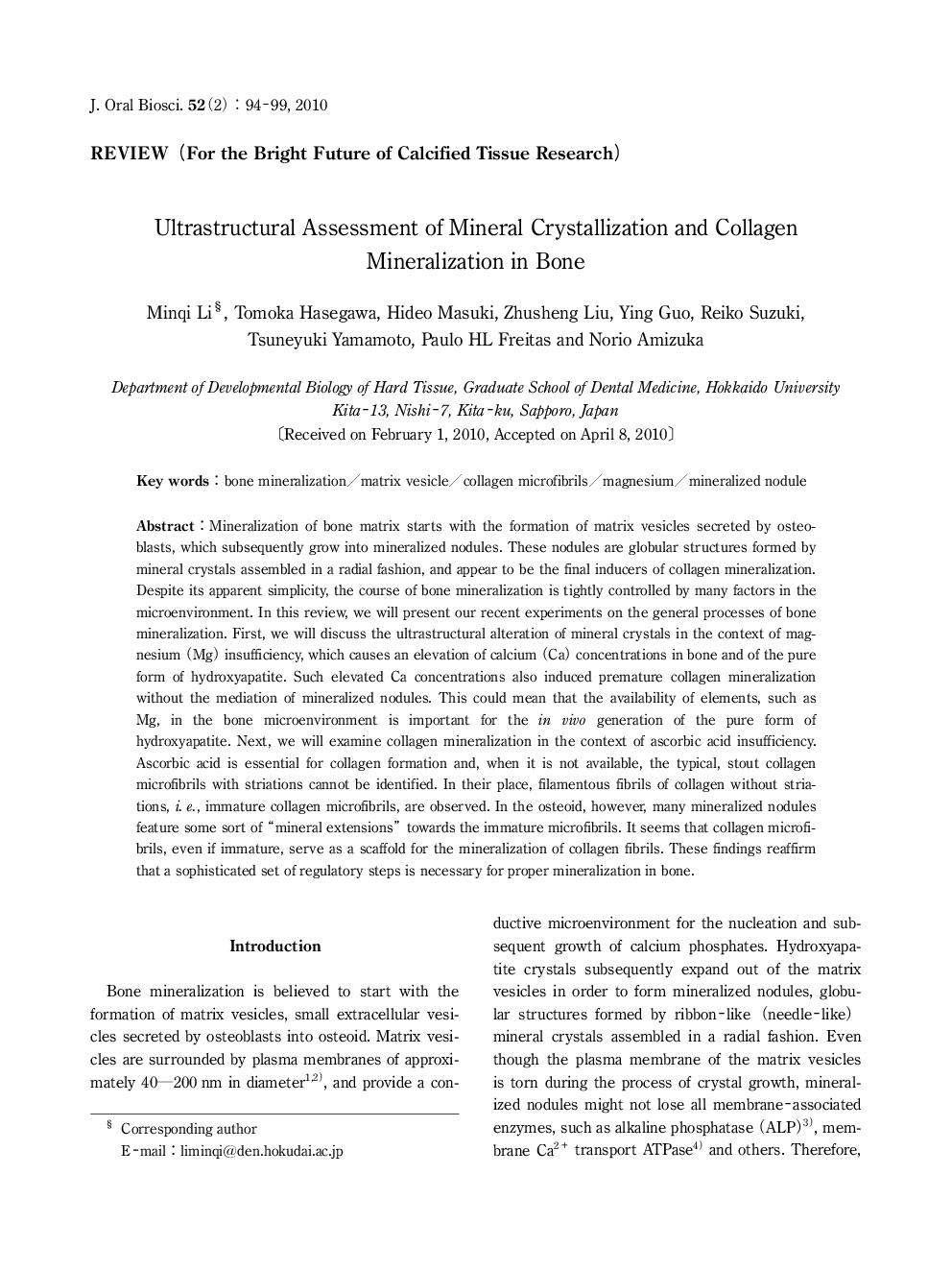| Article ID | Journal | Published Year | Pages | File Type |
|---|---|---|---|---|
| 2776972 | Journal of Oral Biosciences | 2010 | 6 Pages |
Mineralization of bone matrix starts with the formation of matrix vesicles secreted by osteoblasts, which subsequently grow into mineralized nodules. These nodules are globular structures formed by mineral crystals assembled in a radial fashion, and appear to be the final inducers of collagen mineralization. Despite its apparent simplicity, the course of bone mineralization is tightly controlled by many factors in the microenvironment. In this review, we will present our recent experiments on the general processes of bone mineralization. First, we will discuss the ultrastructural alteration of mineral crystals in the context of magnesium (Mg) insufficiency, which causes an elevation of calcium (Ca) concentrations in bone and of the pure form of hydroxyapatite. Such elevated Ca concentrations also induced premature collagen mineralization without the mediation of mineralized nodules. This could mean that the availability of elements, such as Mg, in the bone microenvironment is important for the in vivo generation of the pure form of hydroxyapatite. Next, we will examine collagen mineralization in the context of ascorbic acid insufficiency. Ascorbic acid is essential for collagen formation and, when it is not available, the typical, stout collagen microfibrils with striations cannot be identified. In their place, filamentous fibrils of collagen without striations, i. e., immature collagen microfibrils, are observed. In the osteoid, however, many mineralized nodules feature some sort of “mineral extensions” towards the immature microfibrils. It seems that collagen microfibrils, even if immature, serve as a scaffold for the mineralization of collagen fibrils. These findings reaffirm that a sophisticated set of regulatory steps is necessary for proper mineralization in bone.
